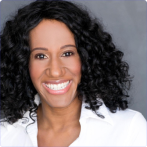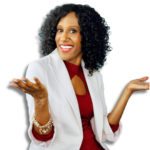The art of public speaking comes naturally to only a very few. For most public speakers, gaining confidence speaking in public takes time and effort. Becoming a fearless speaker will require you to share your passion for your message and discover your own authenticity. Oh, and it will require you to practice. A lot. But we’ll get to that in a second.
Table of Contents
ToggleYour Body on Public Speaking Anxiety
New speakers tend to all have one thing in common: they produce way too much adrenaline the day of their presentation! When we feel nervous, our bodies go into “fight or flight” mode.
Now this mode was very helpful to our ancient ancestors who were constantly in danger of being eaten by sabre tooth tigers. The “fight or flight” reaction allowed their body to quickly produce certain chemicals such as adrenaline and cortisol that sped up their heartbeat, redirected blood flow away from their brain and internal organs to their arms and legs, and increased their rate of breathing.
But about the last thing a public speaker needs is for their heart to start racing and all of the blood to rush out of their head, leaving them unable to form any cohesive thoughts or sentences!
So how do we tackle these nerves and avoid being nervous before presentations? Some would suggest doing 100 jumping jacks right before you go on stage. This exercise will help burn through the chemical cocktail surging through your veins and release any muscular tension. And while some quick exercise can certainly help, developing confidence speaking in public has more to do with how you prepare than anything else.
With this in mind, here are 3 ways you can your defeat your public speaking anxiety.
KNOW YOUR AUDIENCE
For most nervous speakers, the audience is the boogeyman; the group of people who will sit there and judge them, waiting for them to screw up.
If this is how you think of your audience, you’re going about this public speaking thing all wrong!
Instead of thinking of the audience as a group of strangers who will be watching your every move like a hawk, think of them instead realistically: that is as a group of individuals who have come to you asking for help. To the audience, you are actually a kind of superhero; someone who possesses skills and knowledge they wish they had.
Thinking of your audience as a group of people who need your help instantly neutralizes the fear. Why would you fear someone that looks up to you and wants to know what you know? You’re the expert and they know it, that’s why they’ve come to hear you speak.
Now, to give your audience exactly what they came for will require you to understand their needs. Here are some questions you should ask yourself and/or the event organizer about your audience:
How Many People Will Be Present?
Presenting to a group of 30 people is vastly different than presenting to a group of 300. Smaller groups require more intimacy and connection whereas larger groups require more attention to body language and stage presence.
Who Will be Making Up Your Audience?
Knowing your audience profile will help you research and craft your topic. Who exactly will be listening? What profession are they in? What level of education do they have? Are all of the people related somehow (all are teachers – all work at the same organization)? How much knowledge do they possess about your topic? What is their average age? What language might they relate to best?
The more you know about your audience, the better able you’ll be to develop a presentation that is relevant, valuable and engaging.
What Questions Might They Have?
When you think of your topic from your audience’s perspective, what kinds of questions might they ask during a Q&A? You can choose to incorporate some of these into your main presentation. If you don’t have the time or the room to answer all of these questions, at least you’ll be prepared when and if they are asked at the end.
A final note on audience…
It will help calm your nerves tremendously if you arrive early and try to meet a few audience members beforehand. A meet and greet with some audience members will help you see some friendly faces in the crowd when you are up on that stage.
Rehearse
Without question, Steve Jobs will go down in history as being one of the greatest orators of all time. Bill Gates actually once referred to Jobs as a “wizard” who “cast spells” on his audience. But his inspiring presentations had less to do with magic and more to do with rehearsal, and lots of it.
“Most people don’t realize that what looked spontaneous was rehearsed over and over and over,” John Sculley, the former Apple CEO, has been quoted as saying. “Steve thought about every word, every step, every demo.”
The greatest presenters always make it look so effortless because they are so incredibly well rehearsed. The more prepared you are, the more confident you will feel, it’s that simple.
Think of how many hours an airline pilot must put in to be able to remain calm in a crisis. Most public speaking anxiety stems from thinking you can’t handle issues should they arise. But when you prepare thoroughly for your presentation, you know you KNOW your stuff, and can get up there and have a good time sharing your passion and expertise.
So how many times should you practice your presentation? At least 10 times. Of course, the more the better. Practice in the shower, while driving and while walking the dog.
Also, the first time you are ready to say your presentation out loud, have someone record it and also have others listen to you. This way you can see how you look and sound and others can give you constructive feedback.
A WORD OF CAUTION: Rehearsing your presentation does NOT mean memorizing it. You should have a well-researched topic that has been thoroughly outlined. Never try and write a script and then memorize it word for word. You’re only asking to forget something come the big day.
Instead, rehearse the flow of ideas and topic points. You may have a specific intro and conclusion that you say the same way, but everything else should come out of your mouth naturally, and each time it may be a little different. That’s fine, that’s as it should be.
A final word about practice: experts agree it’s a good idea to practice under stressful conditions. Sure, maybe you asked your wife and best friend to listen to your presentation and give feedback. But if you’re someone that really suffers from public speaking anxiety and you’ll be giving a talk in front of hundreds of people, practice dealing with the stress by getting 30 people together to listen. These could be coworkers, or you could even rent out a space and hang up flyers to advertise a free presentation to your local community.

Focus on Approach Goals Instead of Avoidance Goals
Avoidance goals are things that you try desperately to avoid. “I don’t want to go blank and forget what I was saying.” “I don’t want to feel nervous beforehand.”
Approach goals are entirely different. “I want to communicate my takeaways clearly.” “I want to leave my audience feeling inspired.”
Avoidance goals are a constant reminder that you may screw up. This is hardly helpful to someone who is trying to feel more confident.
Approach goals are a constant reminder that your job isn’t to be perfect, it’s to share, educate and inspire!
Final Thoughts
The art of public speaking is something anyone can practice. While it is completely normal for someone new to speaking to feel less-than-confident, by knowing your audience, rehearsing thoroughly and focusing on the right goals, you can and will gain confidence in public speaking.
Are you following us on Linkedin yet? Follow us for more tips, insights, and news




